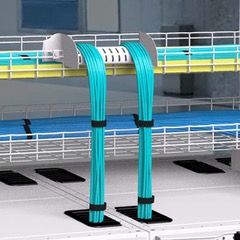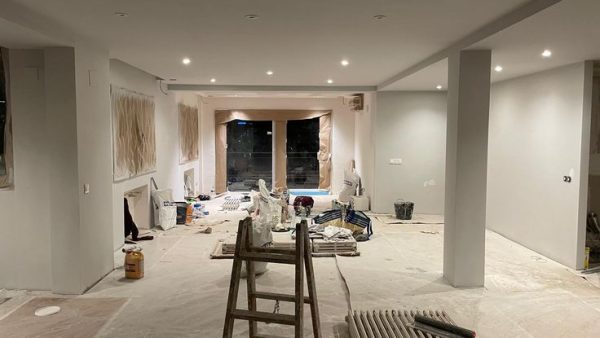Dubai has long been celebrated for its stunning architecture, luxurious hotels, and world-class amenities. Beyond the city’s iconic skyline and towering skyscrapers, the essence of Dubai’s hospitality industry lies in the meticulous attention to interior design that creates unforgettable guest experiences. Hotel interior design in Dubai is not just about aesthetics; it’s a strategic blend of functionality, cultural influence, and luxurious appeal that elevates the overall stay for visitors from around the globe.
The Role of Interior Design in Hotels
Interior design plays a critical role in shaping a hotel’s identity. In Dubai, where competition among luxury hotels is fierce, the design of interiors is a powerful differentiator. The ambiance of a hotel influences guest perception, emotional connection, and even brand loyalty. A thoughtfully designed hotel interior goes beyond furnishing; it creates an immersive experience that aligns with the hotel’s concept, brand, and target audience. From grand lobbies to intimate suites, every element—from furniture and lighting to textures and colors—contributes to the overall guest experience. Designers carefully consider circulation, comfort, and aesthetics to ensure that every corner is functional yet visually captivating.
Luxury Meets Innovation
Dubai’s hotels are synonymous with luxury, and their interiors reflect this ethos. Designers incorporate innovative materials, state-of-the-art technology, and bespoke furniture to offer guests an unparalleled experience. For instance, touchless technology in check-in areas, automated lighting systems in suites, and smart climate controls demonstrate how innovation is seamlessly integrated with style. Luxury in Dubai hotel interiors is often expressed through high-quality materials such as marble, velvet, polished metals, and rare woods. Designers experiment with textures, patterns, and contrasts to create unique environments that resonate with both modern and traditional influences.
Cultural Influences and Local Inspirations
While Dubai is a global hub, its interior design also celebrates local culture and heritage. Elements inspired by Islamic art, Arabic calligraphy, and traditional patterns are frequently incorporated into hotel interiors. Designers often blend these motifs with contemporary trends, creating a balance between heritage and modernity. For example, intricate mashrabiya screens, geometric patterns, and ornate lanterns might adorn walls or ceilings, providing a subtle nod to the city’s cultural roots. The use of warm colors, earthy tones, and natural materials helps to evoke a sense of place while maintaining an international appeal that caters to global travelers.
The Importance of Guest-Centric Design
One of the key principles of hotel interior design in Dubai is guest-centricity. Designers focus on creating spaces that are not only visually appealing but also enhance comfort, convenience, and wellbeing. This involves careful planning of furniture layout, lighting, acoustics, and spatial flow. Guest rooms are designed to be sanctuaries, offering privacy and relaxation. Plush bedding, ergonomic furniture, and ambient lighting create an inviting atmosphere. Public areas, including lobbies, restaurants, and lounges, are designed to encourage interaction while reflecting the brand’s identity and aesthetic.
Sustainability in Hotel Interiors
Sustainability has become an essential consideration in modern hotel interior design. Dubai’s hospitality industry is increasingly embracing eco-friendly materials, energy-efficient lighting, and water-saving fixtures. Designers are integrating sustainable practices without compromising on luxury, demonstrating that environmental responsibility and opulence can coexist. Reclaimed wood, recycled metals, low-VOC paints, and natural fabrics are commonly used to minimize environmental impact. Green spaces, indoor gardens, and biophilic designs are also popular, contributing to both sustainability and guest wellbeing.
Lighting: Setting the Mood
Lighting is a powerful tool in hotel interior design, shaping the ambiance of spaces and influencing how guests perceive them. Dubai hotels often use a combination of natural light, statement fixtures, and subtle accent lighting to enhance the aesthetic appeal. In lobbies, grand chandeliers or artistic installations create a sense of awe, while in guest rooms, layered lighting allows for flexibility—from bright task lighting to soft mood illumination. Outdoor terraces and pool areas also use creative lighting designs to highlight architectural features and create an enchanting nighttime atmosphere.
The Role of Technology in Interior Design
Technology plays an increasingly significant role in hotel interior design in Dubai. Smart room controls, automated curtains, voice-activated assistants, and interactive displays enhance convenience and create a modern, luxurious experience. Hotels are integrating tech seamlessly, ensuring it complements the design rather than overpowering it. Moreover, digital signage, augmented reality, and immersive experiences in common areas are helping hotels differentiate themselves in a competitive market. This fusion of technology and design not only improves operational efficiency but also elevates the guest journey.
Collaborative Design Process
Creating exceptional hotel interiors requires a collaborative approach. Architects, interior designers, project managers, and branding experts work together to ensure a cohesive design language throughout the property. Each element, from structural layout to decorative accessories, is carefully considered to align with the hotel’s vision. Dubai’s hotels often collaborate with internationally renowned designers and local artisans, combining global trends with local craftsmanship. This collaborative process ensures that every detail contributes to a memorable and unique guest experience.
Future Trends in Hotel Interior Design
The future of hotel interior design in Dubai is likely to focus on personalization, wellness, and immersive experiences. Hotels are increasingly offering tailored experiences, such as rooms that adjust lighting, temperature, and even fragrance according to guest preferences. Wellness-focused designs, including spa-like bathrooms, meditation spaces, and biophilic elements, are gaining popularity. Additionally, flexible spaces that can serve multiple purposes—such as co-working areas in lobbies—reflect changing guest expectations. Designers are also exploring bold color schemes, avant-garde furniture, and interactive art installations to create Instagram-worthy spaces that attract younger, experience-driven travelers.
Conclusion
Hotel interior design in Dubai is a sophisticated blend of luxury, culture, innovation, and guest-centric principles. It goes beyond decoration to craft experiences that leave lasting impressions on visitors. From the grandeur of lobbies to the tranquility of guest suites, every element is meticulously curated to embody elegance, comfort, and style. As Dubai continues to solidify its reputation as a global hospitality hub, hotel interior design will remain a crucial element in distinguishing properties in a competitive market. By integrating technology, sustainability, and cultural inspirations, Dubai hotels are redefining luxury, setting new benchmarks for the global hospitality industry, and ensuring that every guest leaves with memories that extend far beyond their stay.






Leave a comment